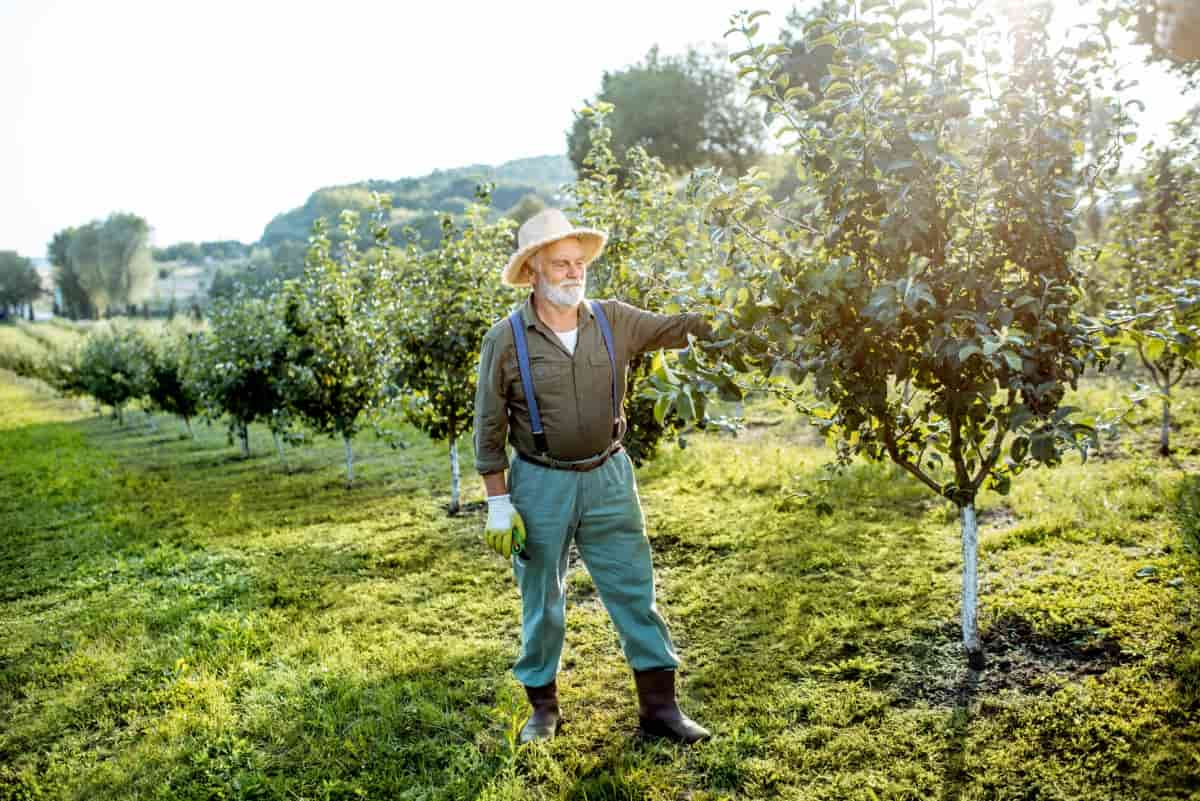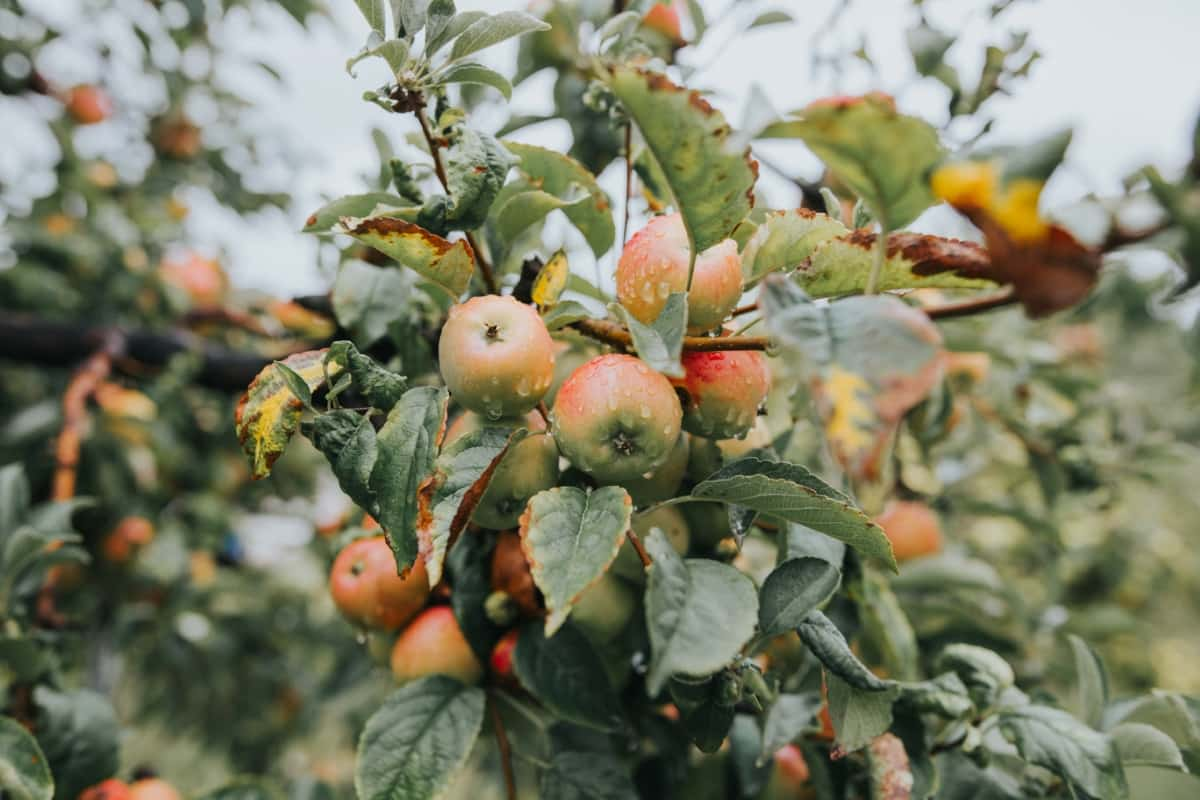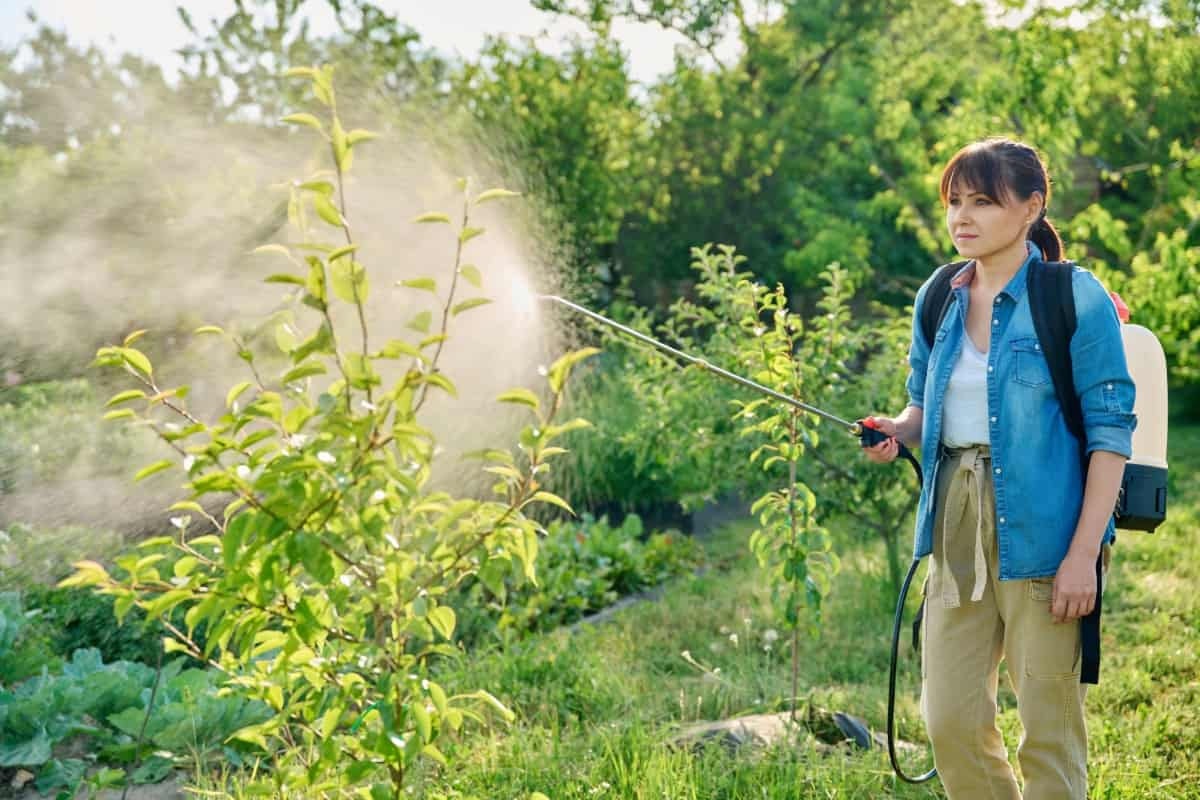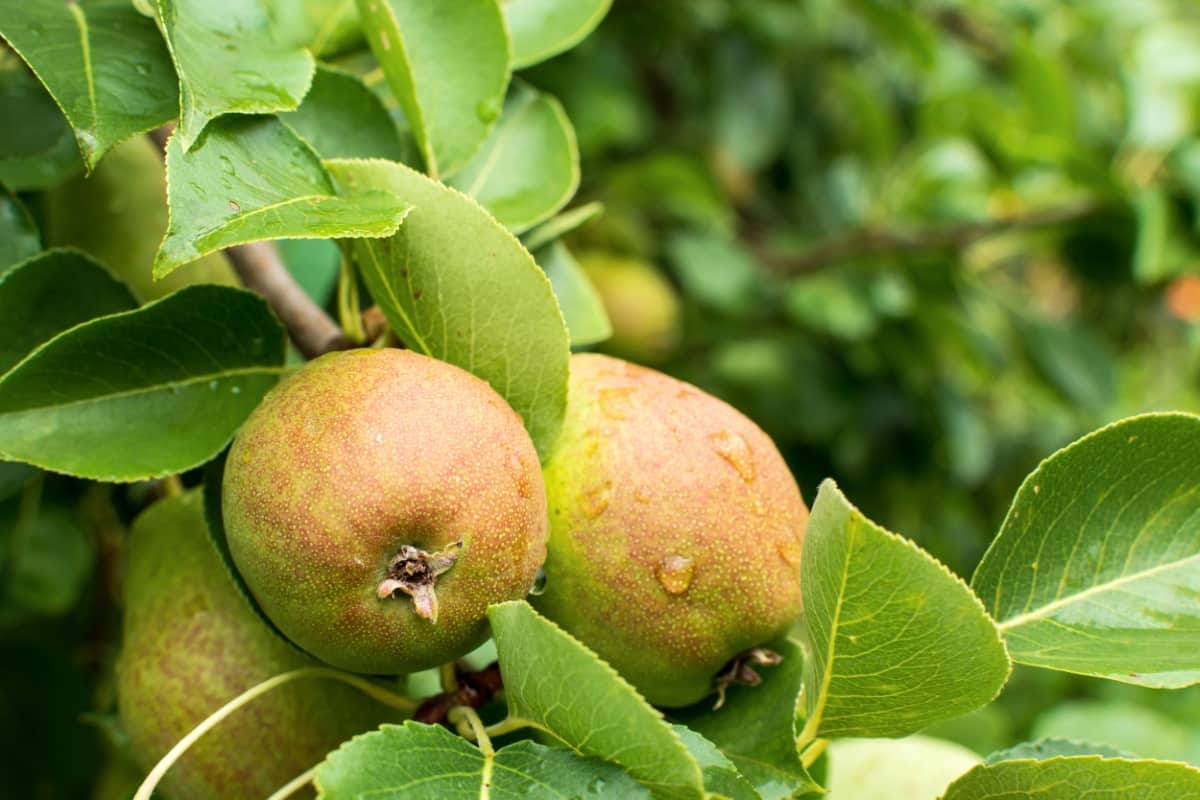A serious threat to orchards, fire blight, is a bacterial disease that causes havoc on apple and pear trees. Preventive and management measures that work are essential to preserving these fruit crops. This overview examines feasible ways to mitigate the effects of fire blight and maintain the productivity and health of orchards by utilizing precise data and useful insights.

Fire Blight in Apple and Pear Trees
Understanding the Causes and Symptoms of Fire Blight in Apple and Pear Trees
Erwinia amylovora, a deadly bacterial disease that affects apple and pear plants, causes fire blight. Symptoms include wilting, blackening, and burnt appearances. The disease thrives in warm, humid weather, where bacteria can spread through insects, rain, or contaminated objects. Bloom sites are the first to become infected, and the bacteria spread throughout the vascular system, blocking water flow and causing necrosis.
Control is challenging due to the bacteria’s chemical that encourages further infection. Preventive measures include cutting off diseased branches, using antibacterial sprays, and choosing resistant tree species. Early detection is crucial to reduce its impact on orchards.
Implementing Effective Cultural Practices to Prevent Fire Blight in Apple and Pear Trees
A bacterial disease called fire blight attacks apple and pear trees and can cause terrible harm. Prevention requires the implementation of good cultural practices. First, to stop the spread of bacteria, cut off affected branches as soon as possible using sanitized equipment. By providing adequate watering and fertilization, you can sustain the health and resilience of your trees.
During bloom, use antibacterial sprays to manage the growth of bacteria. Think about growing types resistant to fire blight. Keep an eye on the weather since warm, humid circumstances encourage disease growth. To ensure that apple and pear growers have a bountiful crop, orchards must be protected from this damaging menace with prompt action and consistent maintenance.
Utilizing Biological Controls for Fire Blight Management in Apple and Pear Orchards
In apple and pear orchards, biological controls offer a sustainable method of controlling fire blight. One useful strategy is using antagonistic bacteria, such as Pseudomonas fluorescens, to outcompete Erwinia amylovora, which causes fire blight. These advantageous bacteria colonize the plant’s surface, making the environment unfavorable for the pathogen.
In case you missed it: How to Control Apple Pests: How to Get Rid of Them with Natural and Organic Treatment

Furthermore, introducing predatory insects like lacewings and lady beetles can aid in managing the number of insects that spread fire blight. This environmentally benign method fosters a more robust orchard ecology by reducing the need for chemical interventions. Maintaining the natural balance of the orchard while managing fire blight over the long run is made possible by regular monitoring and appropriate application of these biological controls.
Resistant Varieties to Minimize the Impact of Fire Blight in Apple and Pear Trees
Apple and pear trees are susceptible to a bacterial disease called fire blight. It is essential to use resistant cultivars to counteract its effects. These cultivars have been deliberately cultivated or chosen to resist the illness, reducing its impact. Adding these resistant plants to orchards can prevent fire blight outbreaks by being proactive.
Scientists have created types with increased resistance through meticulous breeding operations, improving apple and pear orchards’ general well-being and yield. Farmers may safeguard their crops and provide a more resilient and sustainable fruit production system that can better handle the difficulties presented by fire blight by selecting resistant cultivars.
IPM Strategies for Fire Blight Prevention in Apple and Pear Orchards
In apple and pear orchards, integrated pest management, or IPM, is essential for preventing fire blight. One successful tactic is utilizing disease-resistant cultivars, such as “Enterprise” apples and “Gem” pears. Pruning diseased branches regularly aids in controlling their spread, while copper-based sprays applied during bloom can inhibit the growth of bacteria. Predatory mites and ladybugs are examples of beneficial insects that support biological control.
Examining early indicators in orchards, such as bacterial oozing or wilting, ensures a timely response. Weather-based models help guide timely responses by estimating the likelihood of infection. By implementing these IPM techniques, orchard fire blight prevention may be approached holistically and sustainably.
Environmental Factors Affecting the Occurrence of Fire Blight in Apple and Pear Trees
Environmental considerations are critical when it comes to the incidence of fire blight in apple and pear trees. Erwinia amylovora, which causes fire blight, thrives in warm, humid climates, especially when blossoming. Wind and rain are additional factors that may aid in the bacteria’s propagation.
Risk can be reduced by practicing proper orchard management, which includes pruning to increase air circulation and using copper-based sprays during vulnerable times. Orchardists must keep an eye on weather forecasts and take preventative action to reduce the influence of these environmental factors on the occurrence of fire blight.
Best Practices for Pruning and Sanitation to Control Fire Blight in Apple and Pear Orchards
In apple and pear orchards, hygiene and pruning are essential to the fight against fire blight. First, infected branches should be pruned as soon as possible, with clean cuts at least 8 to 12 inches below obvious symptoms. To stop the waste from spreading further, dispose of it away from the orchard.
In case you missed it: How to Control Pear Pests Naturally: How to Get Rid of Them with Natural and Organic Treatment

During the dormant season, annual pruning aids in disease management. Furthermore, keep your orchard hygienic by removing any diseased plant material. Regularly sanitize pruning instruments with a 10% bleach solution in between cuts to prevent transmission. When followed regularly, these procedures greatly aid in limiting and stopping the spread of fire blight.
Understanding the Role of Insect Vectors in Spreading Fire Blight in Apple and Pear Trees
Insect vectors are crucial to spreading fire blight, a bacterial disease affecting apple and pear plants. While consuming the nectar of flowers, insects such as flies and bees unintentionally spread the germs. These microscopic carriers disperse the pathogen, causing fresh infections in the shoots and blooms.
It’s essential to comprehend this transmission mechanism to control and stop outbreaks. Strategies for managing orchards should involve monitoring and managing insect vectors to control fire blight. Preventing fire blight development through targeted pesticides, encouraging general tree health, and conducting routine orchard observations are crucial measures.
Chemical Control Options for Managing Fire Blight in Apple and Pear Orchards
A bacterial disease called fire blight attacks apple and pear orchards. Antibiotics are one type of chemical control that can stop bacterial development. During the bloom phase, streptomycin is frequently used to prevent the spread of bacteria. An option is oxytetracycline. These antibiotics prevent infection, but their effectiveness depends on when they are applied.
Additionally, copper sprays are used as a preventative precaution. To prevent toxicity, it is essential to adhere to approved application rates. Pruning diseased branches is one example of how combining cultural methods with chemical control increases efficacy. Routine monitoring and strategy adaptation to local conditions ensure a balanced and successful strategy for combating fire blight.
Developing a Comprehensive Fire Blight Prevention Plan for Apple and Pear Tree Orchards
A strong fire blight prevention plan is essential for apple and pear tree orchards to guarantee a healthy crop. The first step in creating a resilient orchard is to choose tree varieties resistant to disease. Adopt stringent hygiene procedures, such as cutting off and properly disposing of diseased branches, as soon as possible.
Keep an eye out for indicators of fire blight in orchards, such as drooping or wilting cankers, and treat the affected trees once symptoms appear. Apply copper-based mists to establish a shielding layer during bloom. Finally, teach orchard workers the value of hygiene to reduce the chance of disease transmission.
Frequently Asked Questions on Fire Blight in Apple and Pear Trees
Can Fire Blight Affect Other Plants?
While fire blight primarily affects plants in the Rosaceae family, it can also infect some ornamental plants. It’s essential to be vigilant and take preventive measures if these plants are near susceptible crops.
Is Fire Blight Harmful to Humans?
Fire blight is not harmful to humans. It is a bacteria-based plant disease that does not directly endanger human health. However, it can have significant economic implications for orchards and nursery owners.
In case you missed it: Early Blight Management in Tomato: Symptoms, Treatment, Chemical, Biological, Natural, and Organic Control

Conclusion
Fire blight in apple and pear trees can be prevented by applying copper-based sprays during the growing season and pruning infected branches. Early detection is crucial, and prompt removal of infected parts helps contain the spread. Implementing these measures and maintaining tree health are keys to effective fire blight management.
- Deworming Schedule for Dogs/Puppies: A Beginners Guide
- How to Prevent and Control Parasites in Goats
- Beneficial Insects in Pest Management
- Natural Solutions for Pest Control in Flower Gardens
- Types of Fungicides Used in Agriculture
- Common Issues in the Fruit Development Stage of Pomegranate Farming
- Fruit Development Issues in Papaya: Easy Solutions and Treatment
- Soil-Borne Diseases and How to Protect Your Plants
- Practices to Prevent Disease Spread in the Garden